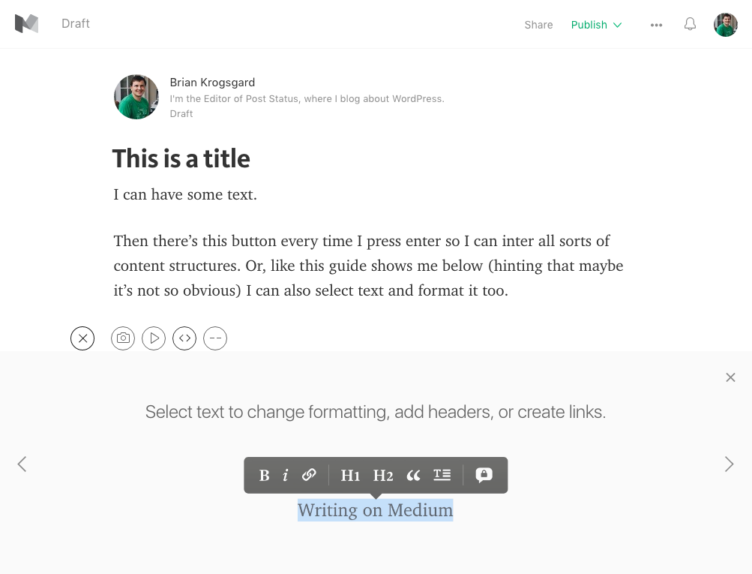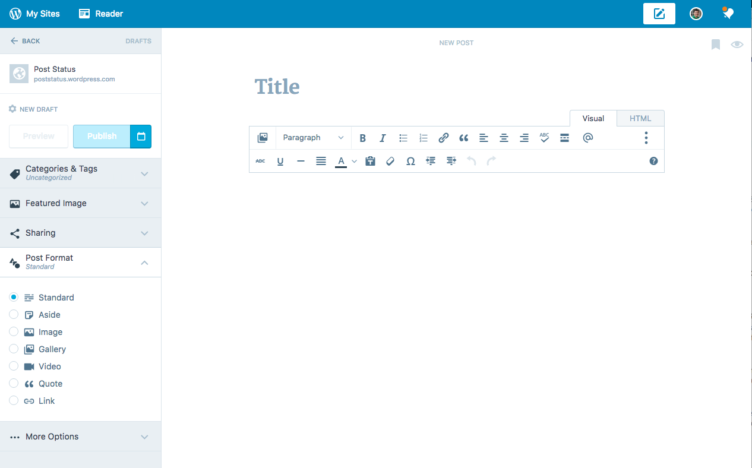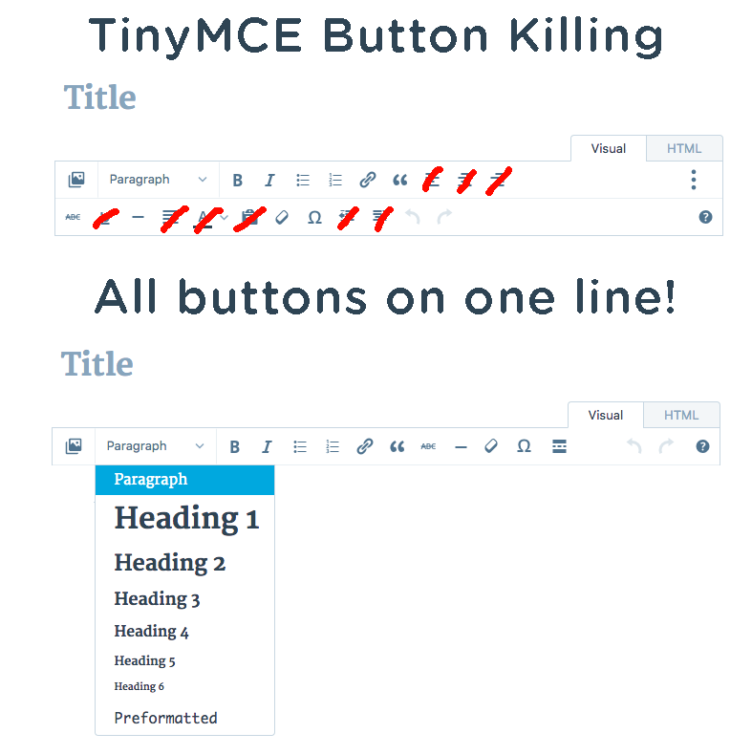WordPress needs big data — knowledge of how the product is used — to make better decisions as to how to direct the future of the software.
To make my point, allow me to drift off into the wonderful world of editing.
My favorite idea for making editing better
Today, I was thinking about the editing experience, not with a sense of delight, unfortunately, and wondering how it can be further improved. I should note that while I’m not overall happy with the editing experience, TinyMCE itself has improved drastically (especially keyboard shortcuts!) under the stewardship of Andrew Ozz and Ella Van Dorpe.
Changing much of anything about the editor is holy territory in WordPress, considering it is the most used bit of the CMS — or at least, so I presume, without data to prove it!
Specifically, I read an article by Matt Cromwell, who advocates that we reconsider post formats and a post format UI. Matt makes a compelling argument to reconsider the UI, if we’re unwilling to just let post formats die, as I believe we should, and have felt so since at least when I wrote as much in 2014.
I agree with Matt at a certain level, in that, “there’s still great usefulness in the post formats concept,” but only in the sense that I believe structured content (images, galleries, video, etc) are good to support in WordPress. The most fundamental breakdown of post formats — which I believe makes the rest of the arguments mostly mute — is that any given view or post or whatever you want to call it, can quite easily contain many of these structured content styles, meaning you’d need multiple “formats” in one post, and the concept quickly unravels from there.
However, the idea of structured content should live on! Yet, I’d rather call it “content blocks”, though the formal term for the core conversation that took place is Content Editing User Experience (CEUX). Basically, it’s what you may call the Medium-esque experience of using some kind of additive action workflow where you press a “plus button” or similar to add a new modular bit of content of a particular structure — like an image, or a gallery, or whatever else — and altogether those blocks of content make up the singular post.

So, I think this is a great idea, and I’m of course ready to tell the world to go and make it happen. Unfortunately, even though it’s a great idea to me, my idea is not justified because I really have no data to back me up beyond antidotal evidence that I think other platforms are finding success with similar editing experiences. And because I’m not WordPress’s benevolent dictator for life, I cannot “make it so.”
While this should perhaps be the future of WordPress editing, it might not! What I do know is that data could help us learn more.
How big data can help
It’s obvious that “big data” can help us, right? If we know how people are using various features of WordPress in real life, then we can make decisions based on that data. Unfortunately, not many people or organizations have great data, and to my knowledge there isn’t a steady flow between those few who have it and those few who make the big calls for WordPress product direction.
What results in some form of stagnation of progress, or an unwillingness to touch certain parts of WordPress. And as Automattic is one of the only organizations with a lot of data and a lot of people working on core, they have a high chance of being the big influencers on the overall WordPress editing experience.
Now, back to the post formats bit.
I asked a friend at Automattic about their usage of post formats. The new WordPress.com editor, Calypso, does not include a tabbed interface for toggling post formats (similar to Alex King’s Post Formats UI that Matt Cromwell wrote about), and they haven’t had anything like that since around 2014.
They still support post formats on WordPress.com and in Calypso, but it’s in the same janky way as WordPress.

My Automattic friend tells me that they are tracking where people click on this page in Calypso, and that fewer than 1.4% of Calypso editor clicks are on post formats. That doesn’t tell me what percentage of posts end up actually being a non-standard post format, but I’d guess it’s not a lot.
Since they did away with the post format tabs in the editor entirely, and since it was part of a prior editing experience, and wasn’t designed into Calypso, I’m not sure if that was based on usage, but you’d presume so. Or just the lack of outcry from writers could indicate that post formats weren’t often used.
Nevertheless, we’ve learned something here! Automattic is tracking editor data, and they could use that to inform editor decision making. And that can be very helpful. And they don’t have to be the only ones.
Hosts can play a role
Not all hosts track what’s happening inside WordPress installs, but I know some big hosts are doing it. They have data, and I know some are even willing to share it.
So hosts can play a big part in bridging the gap between core and site owners to help figure out what’s going on in the real world.
In considering an example of what could be tested, I thought of the various TinyMCE buttons. I can’t stand how many buttons there are! So I went through the TinyMCE buttons (as shown in Calypso, but it’s similar to WordPress core) and picked some to get rid of.

This would obviously not fly as a standalone core change. But if I had some evidence from Automattic and various hosts that have data on button usage, I could then at least propose a change that makes sense.
Currently, my best method for proposing change would be to make a plugin with this new single-line TinyMCE and use its popularity (or lack-thereof) as my justification. That doesn’t really do it for me, and we can do better.
Let’s bridge the data gap
We have the people who are capable of collecting data. We have people that want to see positive change in the WordPress user experience. These two things need a bridge, so I’d love to see that bridge built.
The editor experiments I am outlining here are just an example. You don’t have to agree with my ideas here to agree that data collection and analysis can help influence WordPress for good.
As for who exactly builds bridges like these, it’s the sort of territory I had in mind when I talked to Matt Mullenweg at WordCamp Europe about what I viewed as a need for a WordPress product manager.
Now, I have a lot of readers that either have the kind of data I’m talking about, or can get it. I also have a lot of readers making core decisions. So, I’d love to continue this discussion, whether in Slack or somewhere else, to discuss the merits of collecting and utilizing data in WordPress core decisions.
